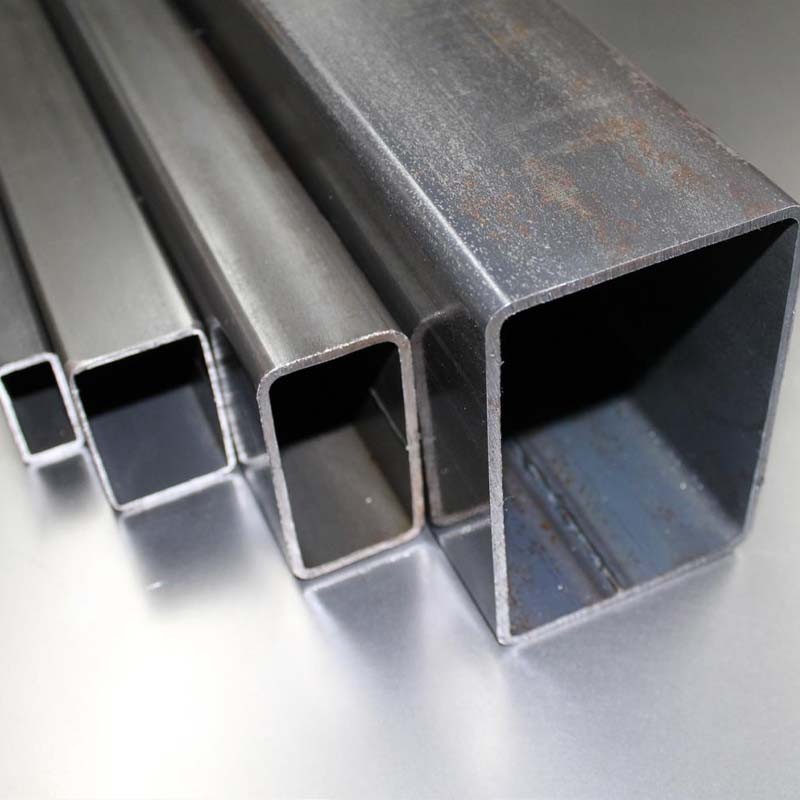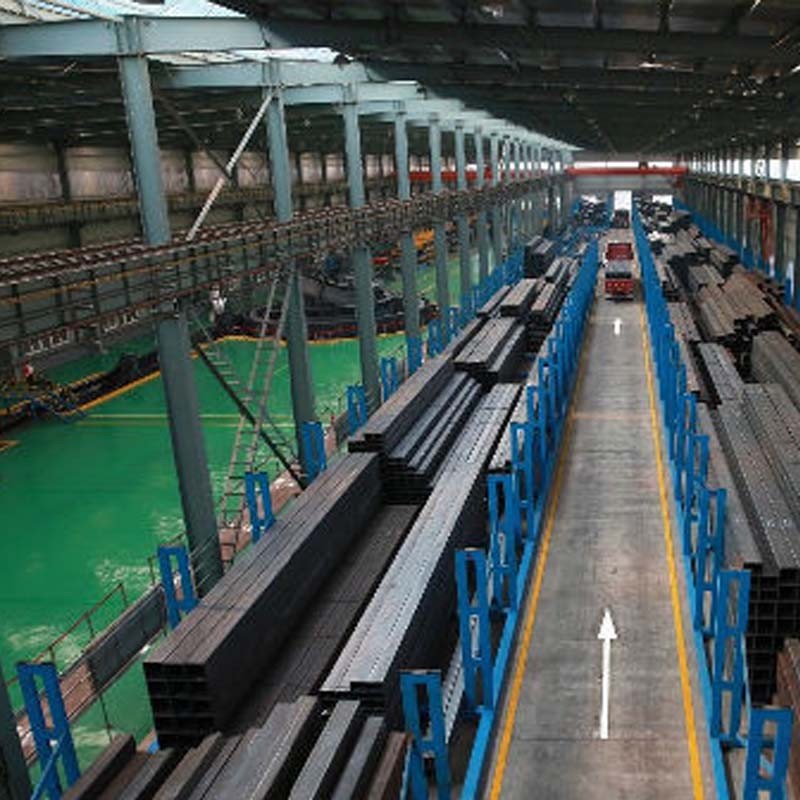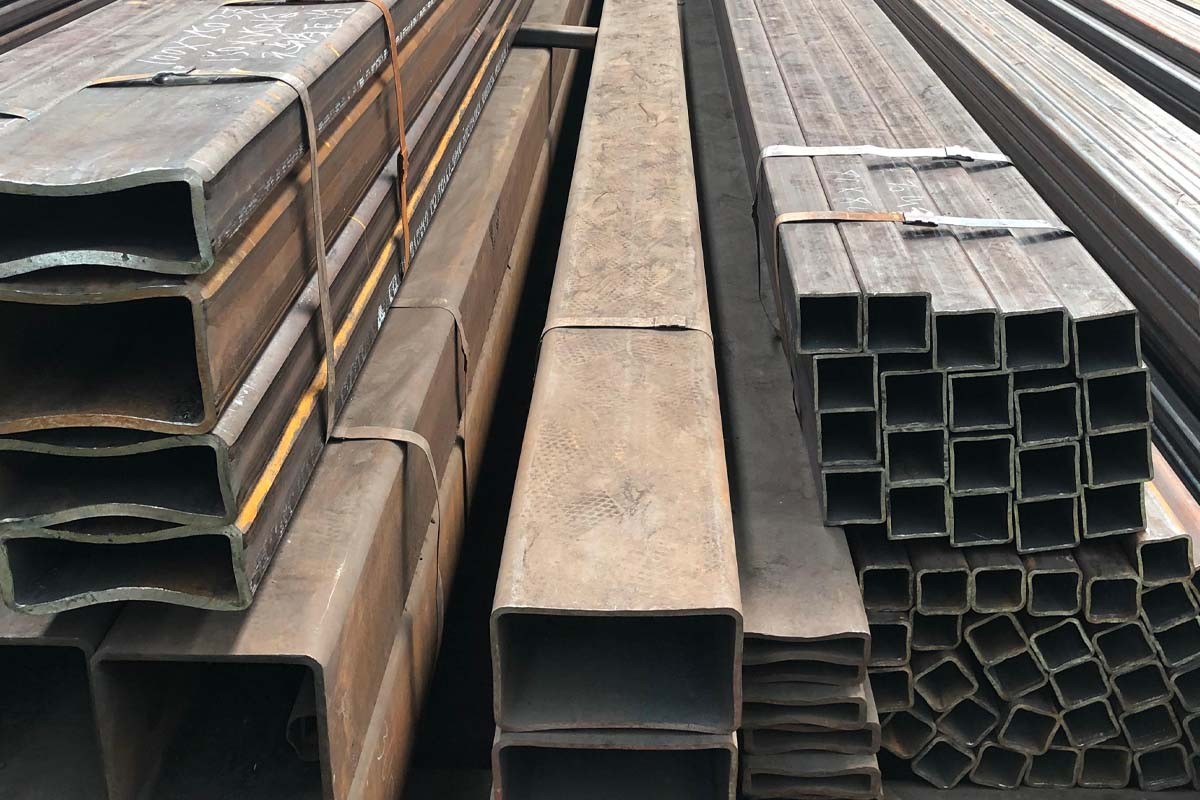
Square & Rectangular Tubes is a name for square pipe and rectangular pipe, that is, steel pipes with equal and unequal side lengths. It is made of strip steel after process treatment. Generally, the strip steel is unpacked, flattened, crimped, welded to form a round tube, and then rolled into a square tube from the round tube and then cut to the required length. The material of square tube can be divided into plain carbon steel square tube and low alloy square tube. The processing methods in the production of square rectangular tubes can be divided into hot rolled seamless square tubes, cold drawn seamless square tubes, extruded seamless square tubes and welded square tubes. The hardness of the square tube is a pointer to measure the softness and hardness of the metal material.
When producing square and rectangular tubes, the following process is generally required:
1. Plate inspection: After the steel plate used to manufacture large-diameter submerged arc welded straight seam square pipes enters the production line, ultrasonic inspection of the entire plate must be carried out first.
2. Edge milling: The two edges of the steel plate are milled on both sides by the edge milling machine to make it meet the required plate width, plate edge parallelism and groove shape.
3. Pre-bending: Use a pre-bending machine to pre-bend the edge of the plate so that the edge of the plate has a curvature that meets the requirements.
4. Forming: On the forming machine, half of the pre-bent steel plate is stamped several times.
5. Pre-welding: The formed longitudinal seam welded pipes are joined together and continuously welded by gas shielded welding.
6. Internal welding: use tandem multi-wire submerged arc welding to weld on the inner side of the straight seam square tube.
7. External welding: Tandem multi-wire submerged arc welding is used to weld the outside of the straight seam square tube.
8. Ultrasonic inspection: 100% inspection of the inner and outer welds of the welded pipe and the base metal on both sides of the weld.
9. X-ray inspection: 100% X-ray industrial television inspection of internal and external welds, using an image processing system to ensure the sensitivity of flaw detection.
10. Diameter expansion: The entire length of the straight seam pipe is expanded to improve the dimensional accuracy and improve the distribution of stress within the square and rectangular pipe.
11. Hydraulic pressure test: The expanded steel pipes are inspected one by one on a hydraulic pressure testing machine to ensure that the test pressure meets the standard requirements. The machine has automatic recording and storage functions.
12. Chamfering: Process the pipe end of the square and rectangular pipe that has passed the inspection to achieve the required pipe end bevel size.
13. Secondary ultrasonic inspection: Conduct ultrasonic inspection one by one again to check for defects that may occur after diameter expansion and hydraulic pressure of the straight seam pipe.
14. Anti-corrosion and coating: After passing the inspection, the square and rectangular pipes will be anti-corrosion and coated according to user requirements.
Advantages of Square & Rectangular Tubes
(1) Good cross-sectional properties: Compared with wide-flange H-shaped steel and round steel pipes with the same weight or section height, the bending stiffness of square pipes in the two major axis directions is 1.3 times that of round steel pipes. The bending stiffness is close to that of the H-beam, while it is 2.7 times that in the direction of the weak axis, and the radius of gyration is 1.6 times that. Higher flexural rigidity not only improves the flexural bearing capacity easily, but also is more suitable for inter-segment loads or the condition of secondary bending moment of the bar. A larger radius of gyration is more conducive to ensuring the overall stability of the bar and improve the bearing capacity of the pressure bar; at the same time, the greater rigidity is also very beneficial to ensure the overall stability of the frame during transportation and hoisting.
(2) Good corrosion resistance: under the same length, the square pipe is in a single-sided corrosion state after the end of the pipe is closed during use, so not only the workload of painting and maintenance can be reduced by about 1/3, but the corrosion resistance life can reach H-beam 2 times.
(3) Reduce engineering cost: The use of square rectangular tubes for one-time cold-bending welding can avoid complicated box-shaped wire processing technology and simplify construction, which not only improves work efficiency, but also reduces costs.
Square & Rectangular Tubes is a kind of steel pipe for construction. It has various uses. According to its use, it can be divided into square pipe for decoration, square pipe for machine tool equipment, square pipe for machinery industry, square pipe for chemical Square tubes, square tubes for automobiles, square tubes for steel beams and columns, square tubes for special purposes, etc.
The specific uses are:
1. Pipes used for transporting fluids: can transport oil, natural gas, water, gas, steam and other fluids;
2. Manufacture of mechanical parts and engineering structures: The square tube is light in weight and does not affect the bending and torsional strength, so it is also widely used in the manufacture of mechanical parts and engineering structures;
3. Production of weapons: It can be used to produce various conventional weapons, barrels, shells, etc.;
4. Building structure: used as building steel for beams, bridges, transmission towers, lifting and transportation machinery, ships, industrial furnaces, reaction towers, container racks, and warehouse shelves.







|

|

|

|

|
| Timely Info | Independent | Platform | Multiple guarantees | Self-operated storage |
| About us | Channel | Useful tools |
|---|---|---|
| About China Steel Market | Prices | Steel Weight Calculation |
| Contact Us | Answers | Why Choose Us |
| Terms & Conditions | Inventory | |
| Privacy Policy | Help |
Hot search words: